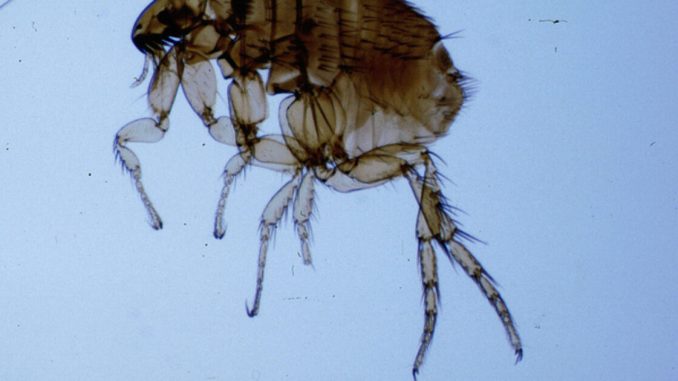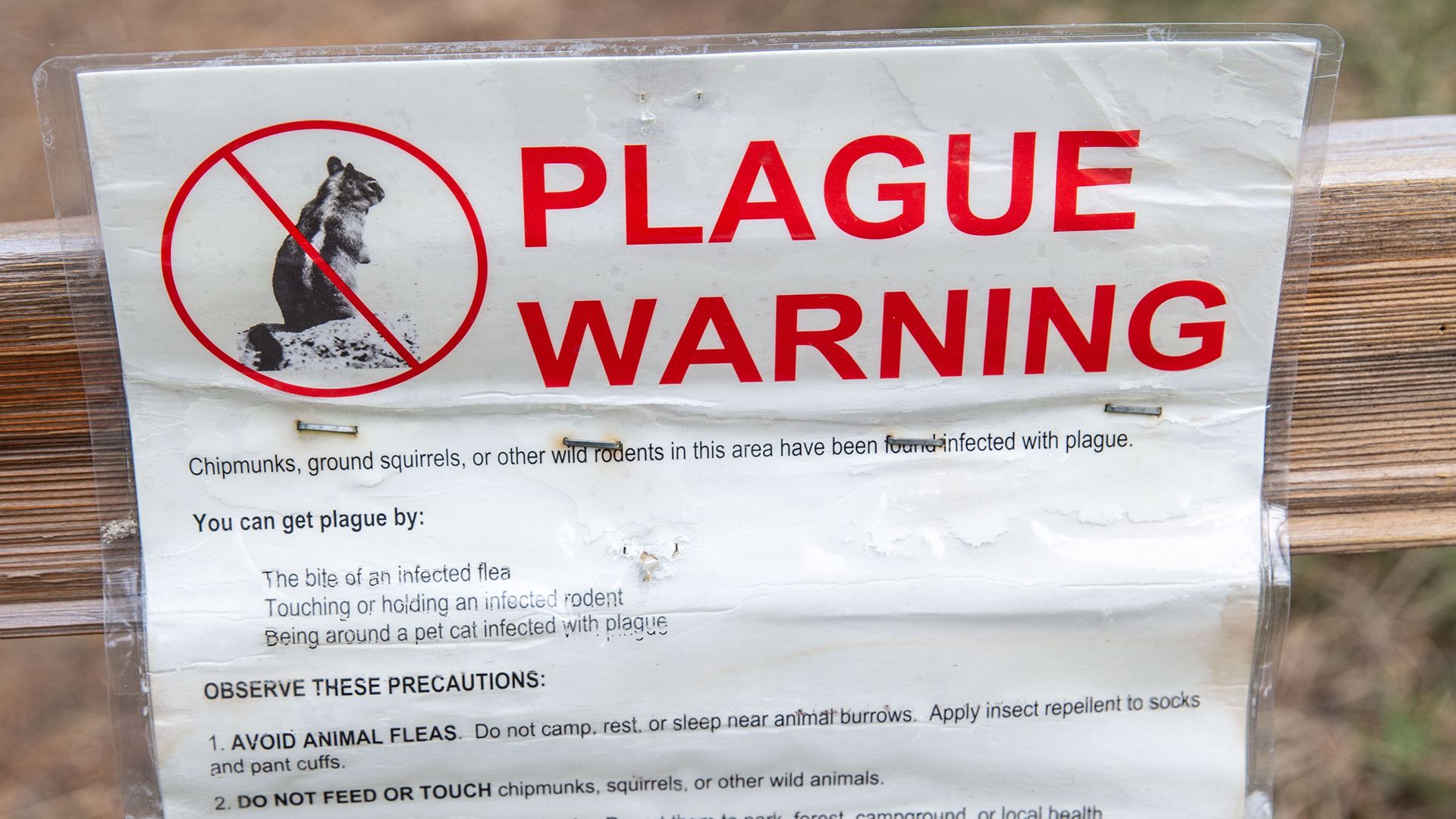
AFPMB/Flickr (CC BY-NC-ND 2.0)
| Published August 22, 2025
What Actually Happened
** Who and Where?**
A resident of South Lake Tahoe, located in El Dorado County, California, has tested positive for plague. They are recovering at home under medical supervision.
** How Did the Infection Occur?**
Health officials believe the individual was likely bitten by an infected flea while camping in the area.
** What Kind of Plague?**
Reports indicate this case involves the bubonic plague—the most common form—caused by the bacterium Yersinia pestis.
Context & Background
-
Plague cases—even in the U.S.—are extremely rare, with an average of about seven human cases per year, mostly occurring in western states such as California, Arizona, New Mexico, and Colorado.
-
El Dorado County has seen evidence of plague activity in rodents in recent years:
-
2021–2024: 41 rodents (ground squirrels or chipmunks) showed exposure to the plague bacterium.
-
2025: An additional four rodents in the Tahoe Basin tested positive.
-
-
Previous human cases in the area include:
-
2020: Another case in El Dorado County, likely also from South Lake Tahoe.
-
2015: Two people contracted plague after exposure in Yosemite National Park. All prior cases resulted in recovery.
-
Symptoms, Treatment & Prevention
Symptoms
Symptoms typically appear within 1–2 weeks of exposure and can include:
-
Fever
-
Nausea
-
Weakness
-
Swollen lymph nodes (buboes)
Treatment
Plague is a bacterial infection and, if caught early, is effectively treated with antibiotics. Most patients recover when treatment is initiated promptly.
Prevention Tips (from El Dorado County health officials):
-
Avoid feeding or handling wild rodents (like squirrels or chipmunks).
-
Don’t touch sick, injured, or dead rodents.
-
Keep pets away from rodent burrows.
-
Use insect repellent (e.g., DEET) when outdoors.
-
Wear long pants tucked into boots.
-
Keep pets leashed and protected with flea-control products.
-
Seek medical attention if symptoms arise after visiting plague-prone areas.
Summary Table
| Factor | Details |
|---|---|
| Location | South Lake Tahoe, El Dorado County, California |
| Infection | Likely from a flea bite during camping |
| Type of Plague | Bubonic plague (Yersinia pestis) |
| Current Status | Patient recovering at home under medical care |
| Rodent Surveillance | Ongoing monitoring; rodents recently tested positive |
| Historical Cases | 2020 (El Dorado), 2015 (Yosemite) |
| Annual U.S. Cases | Approx. 7, mostly in western states |
| Symptoms | Fever, swollen lymph nodes, nausea, weakness |
| Treatment | Antibiotics are highly effective if given early |
| Prevention | Avoid rodents, use repellent, protect pets, seek timely medical care |

A bubonic plague warning is posted in 2022. (Photo: George Rose/Getty Images)
:max_bytes(150000):strip_icc():focal(785x279:787x281):format(webp)/lake-tahoe-plague-082125-5f56fbcea4064639b022ec85695698b9.jpg)
Lake Tahoe, California; Yersinia Pestis Bacteria Causes Bubonic Plague.
 Implications
Implications
Public Health Implications
-
Reassurance vs. Fear – While the word “plague” is historically alarming, health officials emphasize that modern antibiotics make it highly treatable. The real challenge is public perception and preventing unnecessary panic.
-
Increased Surveillance – Local authorities will likely expand rodent and flea testing in the Tahoe Basin and nearby counties to assess the spread.
-
Preparedness Reminder – This case reminds health departments across the western U.S. to remain vigilant for rare but possible outbreaks of old infectious diseases.
Environmental & Wildlife Implications
-
Rodent Populations as Carriers – The discovery that multiple rodents (chipmunks, squirrels) recently tested positive for plague means wildlife remains a persistent reservoir for Yersinia pestis.
-
Tourism & Outdoor Recreation – South Lake Tahoe is a major tourist hub. Visitors may grow cautious about camping, hiking, and outdoor activities in areas with plague warnings, impacting the local economy if fear spreads.
Medical & Scientific Implications
-
Rare Diseases Still Exist – The case is a reminder that even in advanced societies, ancient pathogens still circulate in the environment.
-
Early Detection Matters – Survival and recovery depend on prompt medical attention; this underscores the importance of public awareness about symptoms like swollen lymph nodes, fever, and weakness.
-
Potential for Future Cases – With plague-positive rodents confirmed in 2025, sporadic human infections could continue unless vector control (flea management) is strengthened.
Societal & Historical Implications
-
Historical Echo – The word “plague” immediately recalls the Black Death of the Middle Ages. While today’s risk is vastly lower, the case shows how diseases once thought relegated to history can still re-emerge.
-
Trust in Institutions – How officials communicate this case will influence public trust in health agencies—especially after recent pandemic experiences. Clear messaging is vital to avoid misinformation.
Economic & Policy Implications
-
Tourism & Travel – Even one confirmed case can generate global headlines, potentially discouraging travel to Tahoe in the short term.
-
Resource Allocation – County and state agencies may need to divert funds to vector control and public education campaigns.
-
Policy Lessons – California may update wildlife management and camping regulations to mitigate risks.
 Overall Takeaway:
Overall Takeaway:
The confirmed case of bubonic plague in South Lake Tahoe is a stark reminder that even in the modern era, ancient diseases still linger in nature. While the infection is rare and highly treatable with today’s antibiotics, its presence underscores the importance of vigilance, public education, and continued environmental monitoring. For residents and visitors, the risk remains extremely low so long as simple precautions—such as avoiding contact with rodents and using flea protection—are observed.
Ultimately, this incident is less a cause for panic and more a call for awareness. By taking sensible steps, communities can protect both public health and the local environment while ensuring that South Lake Tahoe remains a safe destination for tourism and recreation.





Be the first to comment